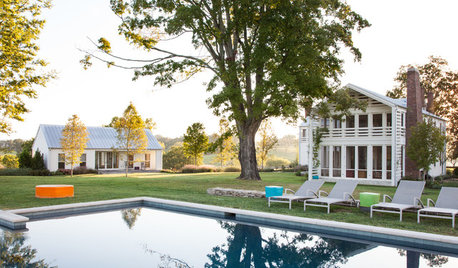Need Help Increasing Organic Matter on 3 acres - Long Term Plan
Cougfan
12 years ago
Related Stories

DECORATING GUIDESHow to Choose an Awesome Area Rug No Matter What Your Space
High use, a low door, kids and pets running amok — whatever your area endures, this insight will help you find the right rug for it
Full Story
Houzz Tour: A House Built for the Long Term
The designers of this one-of-a-kind home made the most of its challenging location to deliver enduring comfort and style
Full Story
MOVINGRelocating Help: 8 Tips for a Happier Long-Distance Move
Trash bags, houseplants and a good cry all have their role when it comes to this major life change
Full Story
ORGANIZING4 Questions to Help You Organize Your Favorite Photos
Organize your keeper photos with a system that's just right for you, whether it's in the cloud or you can hold it in your hand
Full Story
EXTERIORS17 Ways to Increase Your Home's Curb Appeal
The word on the street? Homes with appealing front views can sell faster, lift moods and convey a warm welcome
Full Story
HOUZZ TOURSWe Can Dream: An Expansive Tennessee Farmhouse on 750 Acres
Wood painstakingly reclaimed from old barns helps an 1800s farmhouse retain its history
Full Story
GARDENING GUIDESOrganic Matters: Thwart Insect Pests With Trap Crops
Add a few sacrificial plants to your garden to lure insects away from the harvest
Full Story
LIFE12 House-Hunting Tips to Help You Make the Right Choice
Stay organized and focused on your quest for a new home, to make the search easier and avoid surprises later
Full Story
ORGANIZINGDo It for the Kids! A Few Routines Help a Home Run More Smoothly
Not a Naturally Organized person? These tips can help you tackle the onslaught of papers, meals, laundry — and even help you find your keys
Full Story
LIFEDecluttering — How to Get the Help You Need
Don't worry if you can't shed stuff and organize alone; help is at your disposal
Full Story





scotty66
Kimmsr
Related Professionals
Danbury Landscape Architects & Landscape Designers · Chattanooga Landscape Architects & Landscape Designers · Clemson Landscape Architects & Landscape Designers · Simi Valley Landscape Architects & Landscape Designers · Barrington Landscape Contractors · Concord Landscape Contractors · Fishers Landscape Contractors · Galt Landscape Contractors · Lyndhurst Landscape Contractors · Northport Landscape Contractors · Boise Decks, Patios & Outdoor Enclosures · North Aurora Decks, Patios & Outdoor Enclosures · Port Saint Lucie Decks, Patios & Outdoor Enclosures · Springfield Decks, Patios & Outdoor Enclosures · Troy Decks, Patios & Outdoor Enclosuresdavid52 Zone 6
tishtoshnm Zone 6/NM
novascapes
Kimmsr
Belgianpup
reg_pnw7
Belgianpup
Lloyd
wayne_5 zone 6a Central Indiana
novascapes
toxcrusadr
Belgianpup
toxcrusadr
darth_weeder
gargwarb
toxcrusadr
Belgianpup
toxcrusadr
gargwarb
gargwarb
darth_weeder
novascapes
toxcrusadr
darth_weeder
toxcrusadr
tracydr
borderbarb
darth_weeder
novascapes
toxcrusadr
gargwarb
novascapes
gargwarb
novascapes
gargwarb
gargwarb
novascapes
gargwarb
GreeneGarden
gonebananas_gw